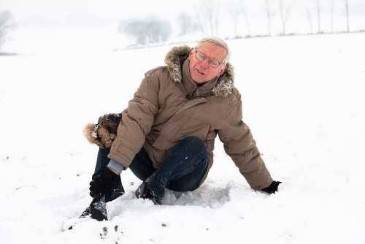Slip and Fall Cases in New York State
 Are slip and fall cases in New York State treated differently than other personal injury cases? For more information, contact the experienced accident attorneys at Humble Law Offices to schedule a free consultation.
Are slip and fall cases in New York State treated differently than other personal injury cases? For more information, contact the experienced accident attorneys at Humble Law Offices to schedule a free consultation.
Slip and Fall Cases in New York State | Negligence
The typical slip and fall injury case is rooted in negligence: should the property owner or manager be held responsible for allowing a dangerous condition to appear, or did the injured party’s recklessness lead to the injury in question? This question most often does not have a simple “yes” or “no” answer, as both parties can share some blame for the injury. If the property owner or manager had taken better care of the property, the condition that caused the injured person to slip and fall would never have existed. If the injured person had taken extra precautions, if he or she had worn sturdier footwear or looked before walking, the injury could have been avoided. At the same time, though, a property owner cannot be everywhere at once, and when financial limitations, a lack of time, and insufficient communication by employees or subcontractors are involved, the property owner may truly have only a small share of the responsibility. Likewise, if the injured party was walking in an area that clearly featured “warning” or “no trespassing” signs, was running or otherwise acting irresponsibly, or was looking at her or his mobile device while walking, a slip and fall attorney may find it challenging to argue that the fault is entirely or even primarily that of the property owner.
Slip and Fall Cases in New York State | Premises Liability
Each slip and fall case is a conflict between an individual who was injured on a property (the plaintiff) and the owner or manager of that property (the defendant), both of whom will be represented by personal injury or premises liability attorneys. The plaintiff’s attorney is usually responsible for showing that a dangerous condition existed on the property and that it would have been difficult for the plaintiff to avoid the condition. The defendant’s attorney, on the other hand, must demonstrate that the dangerous condition did not exist, that the condition was in the process of being resolved or repaired, and/or that the plaintiff acted in a way that caused the injury. Both attorneys may provide photographs of the site where the injury occurred, and videos of the plaintiff walking through the property at the time of the injury may feature as well. The plaintiff can provide medical documents to illustrate the extent of the injury, as this evidence may sway the judge to grant compensation for medical expenses. The plaintiff may win if her or his attorney shows that it was largely or entirely an unavoidable hazard on the property that led to the injury.
Contact Jamestown slip and fall lawyer Scott F. Humble today if you have any questions or concerns about moving forward with your slip and fall injury case.

Sarcoidosis carries a good prognosis in majority of patients. purchasing cialis online